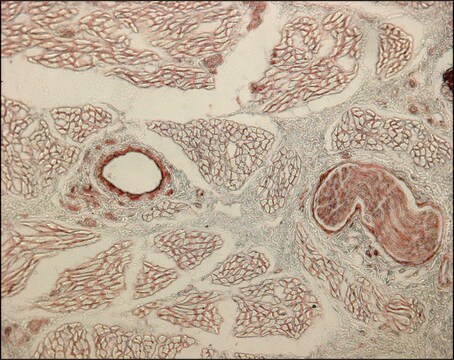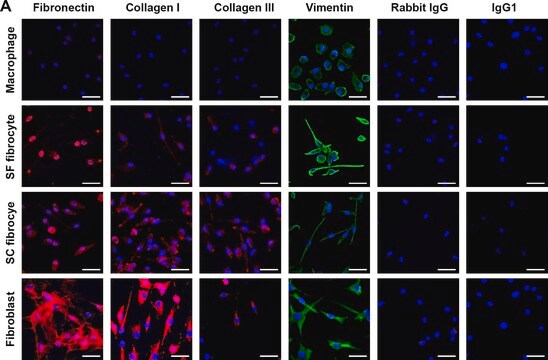SAB4200500
Anti-Collagen IV antibody, Mouse monoclonal
clone J3-2, purified from hybridoma cell culture
Synonyma:
Anti-COL4, Monoclonal Anti-Collagen IV antibody produced in mouse
About This Item
Doporučené produkty
biological source
mouse
conjugate
unconjugated
antibody form
purified from hybridoma cell culture
antibody product type
primary antibodies
clone
J3-2, monoclonal
form
buffered aqueous solution
species reactivity
mouse, rat, dog, bovine, human, monkey
concentration
~1.0 mg/mL
technique(s)
immunohistochemistry: 2.0-4.0 μg/mL using human liver tissue sections.
western blot: 1.0-2.0 μg/mL using human placenta extracts.
shipped in
dry ice
Storage temp.
−20°C
target post-translational modification
unmodified
Gene Information
human ... COL4A1(1282)
General description
Immunogen
Application
- in the immunohistochemical staining
- in the immunostaining
- in the immunofluorescence detection
- as a secondary antibody in the western blot analysis
Biochem/physiol Actions
Physical form
Disclaimer
Ještě jste nenalezli správný produkt?
Vyzkoušejte náš produkt Nástroj pro výběr produktů.
Storage Class
10 - Combustible liquids
wgk_germany
WGK 2
flash_point_f
Not applicable
flash_point_c
Not applicable
Vyberte jednu z posledních verzí:
Osvědčení o analýze (COA)
Nevidíte správnou verzi?
Potřebujete-li konkrétní verzi, můžete vyhledat daný certifikát podle čísla dávky nebo čísla šarže.
Již tento produkt vlastníte?
Dokumenty související s produkty, které jste v minulosti zakoupili, byly za účelem usnadnění shromážděny ve vaší Knihovně dokumentů.
Náš tým vědeckých pracovníků má zkušenosti ve všech oblastech výzkumu, včetně přírodních věd, materiálových věd, chemické syntézy, chromatografie, analytiky a mnoha dalších..
Obraťte se na technický servis.







